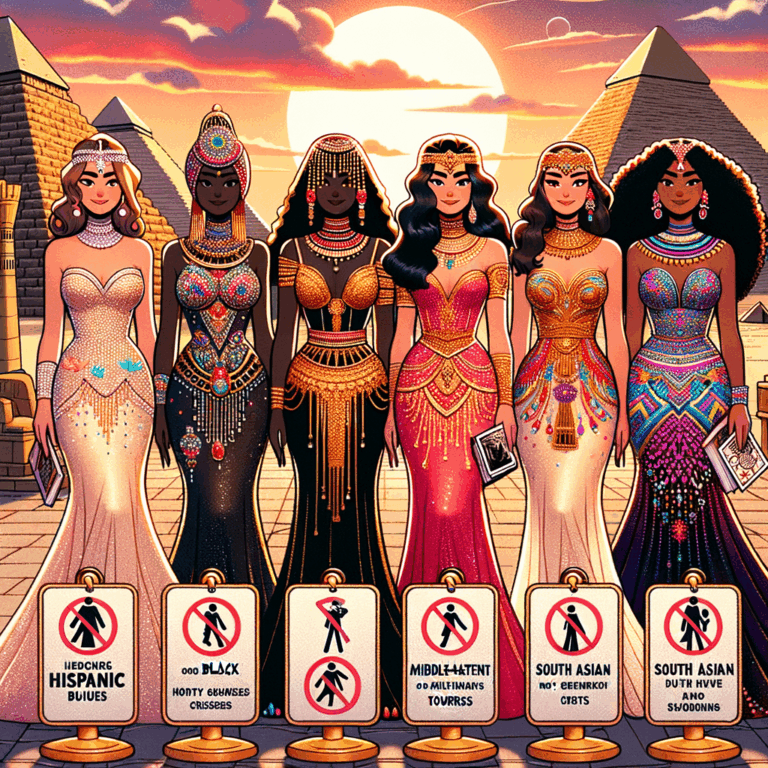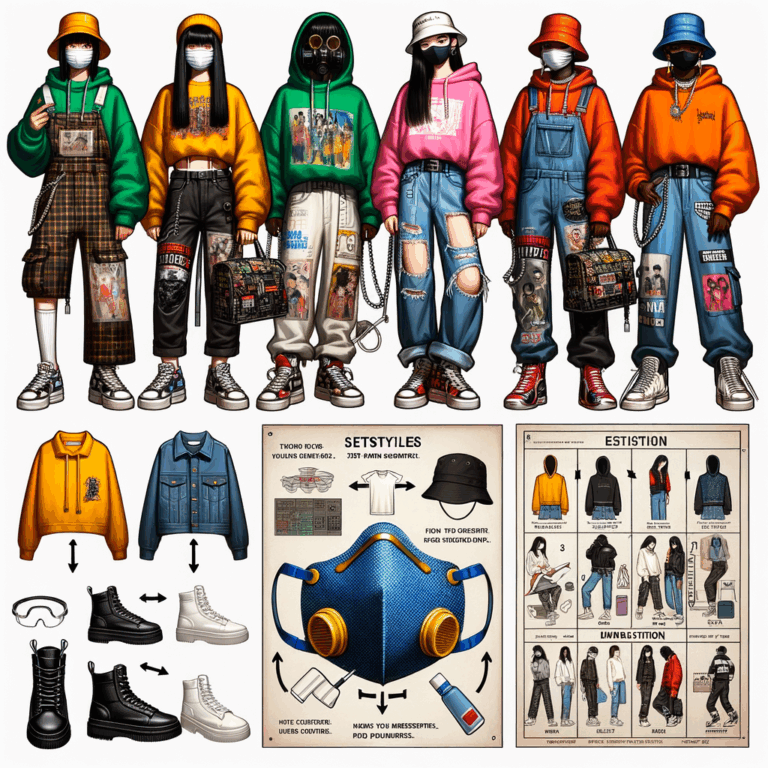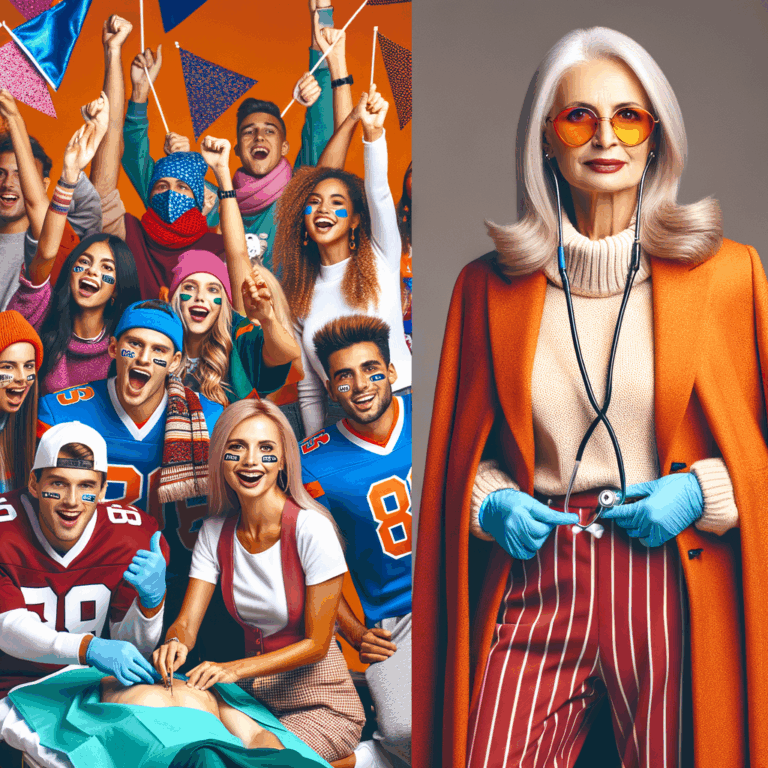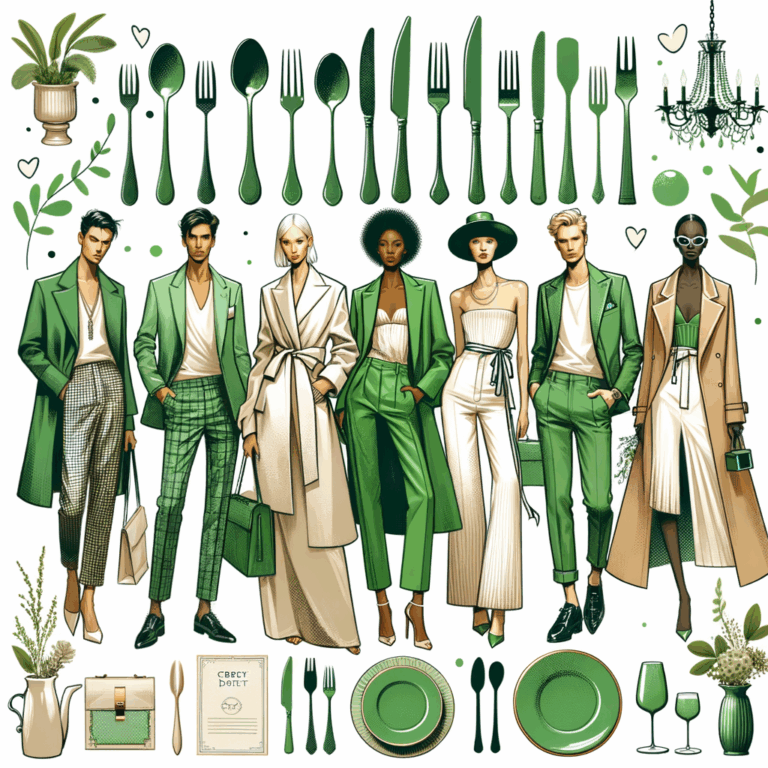
Blog
“Embrace Your Curves: Celebrating Every Size Beyond the Standard”
Defining Plus Size: What Does It Mean?
In a world where fashion and beauty standards are constantly evolving, the term “plus size” has emerged as a beacon of inclusivity and empowerment. But what does it truly mean to be considered plus size? The answer is both simple and complex, as it encompasses a range of sizes, shapes, and personal experiences. At its core, plus size is a term used to describe clothing and individuals who fall outside the traditional sizing charts, typically starting at size 14 and above. However, it is much more than just a number on a tag; it is a celebration of diversity and a challenge to outdated norms.
Historically, the fashion industry has been notorious for its narrow definition of beauty, often glorifying slender figures and marginalizing those who do not fit this mold. This exclusionary practice has led to a lack of representation and a sense of alienation for many. Yet, the rise of the plus size movement has begun to dismantle these barriers, advocating for a more inclusive and realistic portrayal of beauty. This shift is not just about clothing sizes; it is about recognizing and honoring the unique beauty of every individual, regardless of their body shape.
As we delve deeper into the concept of plus size, it is essential to understand that it is not a one-size-fits-all label. The term encompasses a wide spectrum of body types, each with its own distinct characteristics and beauty. From curvy to voluptuous, each plus size individual brings their own flair and confidence to the table. This diversity is what makes the plus size community so vibrant and inspiring. It is a reminder that beauty is not confined to a specific size or shape but is found in the uniqueness of each person.
Moreover, the plus size movement has given rise to a new wave of fashion that caters to a broader audience. Designers and brands are increasingly recognizing the demand for stylish and well-fitting clothing for plus size individuals. This has led to a proliferation of options that celebrate curves and provide a sense of empowerment. No longer confined to frumpy or ill-fitting garments, plus size fashion now offers a plethora of choices that allow individuals to express their personal style with confidence and pride.
In addition to the fashion industry’s evolving landscape, the rise of social media has played a pivotal role in redefining plus size. Platforms like Instagram and TikTok have become powerful tools for body positivity and self-love. Influencers and everyday individuals alike are using these platforms to share their stories, showcase their style, and challenge societal norms. This digital revolution has created a sense of community and solidarity, where plus size individuals can find support, inspiration, and validation.
Ultimately, being considered plus size is not about fitting into a specific category or meeting certain criteria. It is about embracing one’s body and celebrating its uniqueness. It is about challenging the status quo and advocating for a world where all bodies are seen, valued, and respected. The journey to self-acceptance and body positivity is deeply personal and often fraught with challenges, but it is also incredibly rewarding. By redefining what it means to be plus size, we are paving the way for a more inclusive and compassionate society.
In conclusion, the term plus size is a powerful reminder that beauty comes in all shapes and sizes. It is a call to action to embrace diversity and challenge outdated standards. As we continue to redefine and celebrate plus size, we move closer to a world where everyone can feel confident, beautiful, and empowered in their own skin.
The History Of Plus Size Fashion
The concept of plus size fashion has evolved significantly over the years, reflecting broader societal changes and a growing recognition of diverse body types. Historically, the fashion industry has often marginalized those who do not fit into a narrow definition of beauty, typically characterized by slim figures and specific measurements. However, the journey of plus size fashion is a testament to resilience, creativity, and the unyielding spirit of those who have fought for inclusivity and representation.
In the early 20th century, the term “plus size” was virtually non-existent. Clothing for larger women was often custom-made or altered from existing garments, as mainstream fashion did not cater to their needs. This lack of availability and representation perpetuated the notion that larger bodies were less desirable. However, the tides began to change in the 1920s when Lane Bryant, a pioneering brand, introduced the first ready-to-wear plus size clothing line. This was a revolutionary step, providing fashionable options for women who had long been overlooked by the industry.
As the decades progressed, the plus size fashion landscape continued to evolve. The 1950s and 1960s saw a gradual increase in the availability of plus size clothing, though it was often limited to matronly styles that did little to celebrate the wearer’s individuality. Despite these limitations, the seeds of change were being sown. The 1970s and 1980s brought about a cultural shift, with the rise of the body positivity movement challenging societal norms and advocating for the acceptance of all body types. This era marked a significant turning point, as more designers and brands began to recognize the demand for stylish, well-fitting plus size clothing.
The 1990s and early 2000s witnessed further progress, with the emergence of plus size models and fashion icons who challenged traditional beauty standards. These trailblazers, such as Emme and Ashley Graham, used their platforms to advocate for greater inclusivity and representation in the fashion industry. Their influence helped to break down barriers and pave the way for a more diverse and accepting fashion landscape.
In recent years, the plus size fashion industry has experienced a renaissance, driven by a growing demand for inclusivity and representation. Social media has played a crucial role in this transformation, providing a platform for plus size individuals to share their stories, celebrate their bodies, and connect with like-minded communities. This digital revolution has empowered consumers to demand more from the fashion industry, leading to an increase in the availability of stylish, high-quality plus size clothing.
Today, plus size fashion is more vibrant and diverse than ever before. Designers and brands are increasingly recognizing the importance of catering to a wide range of body types, offering an array of styles that celebrate individuality and self-expression. The rise of inclusive fashion shows, such as Chromat and Savage X Fenty, further highlights the industry’s commitment to diversity and representation.
The history of plus size fashion is a story of perseverance, creativity, and the relentless pursuit of inclusivity. It serves as a powerful reminder that beauty comes in all shapes and sizes, and that everyone deserves to feel confident and celebrated in their own skin. As the fashion industry continues to evolve, it is essential to remember the trailblazers who have paved the way and to continue advocating for a more inclusive and representative future.
Plus Size In Different Cultures
In a world that celebrates diversity, the concept of what is considered plus size varies significantly across different cultures. This diversity in perception not only highlights the beauty of human variety but also underscores the importance of embracing all body types. As we journey through various cultural landscapes, we discover that the definition of plus size is as fluid and dynamic as the cultures themselves.
In Western societies, particularly in the United States and Europe, the fashion industry has traditionally set stringent standards for what is considered an ideal body type. However, in recent years, there has been a significant shift towards inclusivity and body positivity. The term “plus size” in these regions generally refers to clothing sizes 14 and above. This shift is not just a trend but a movement that encourages individuals to love and accept their bodies, regardless of societal standards. The rise of plus-size models and influencers has played a crucial role in redefining beauty norms, making it clear that beauty is not confined to a specific size.
Transitioning to the East, we find a different narrative. In many African cultures, fuller figures have long been celebrated as symbols of wealth, fertility, and health. For instance, in countries like Nigeria and Ghana, a curvier body is often seen as more desirable. This cultural appreciation for fuller figures is deeply rooted in history and tradition, where a well-nourished body was a sign of prosperity and good fortune. The concept of plus size in these cultures is not stigmatized but rather embraced and revered.
Similarly, in the Pacific Islands, particularly in places like Samoa and Tonga, larger body sizes are often associated with strength and beauty. The traditional dances and cultural practices in these regions frequently feature individuals of all sizes, celebrating the natural diversity of the human form. This inclusive approach fosters a sense of community and acceptance, where everyone is encouraged to take pride in their unique bodies.
Moving to Asia, the perception of plus size can be quite different. In countries like Japan and South Korea, there is a strong cultural emphasis on slenderness. However, even within these societies, there is a growing movement towards body positivity and acceptance. Plus-size fashion brands are emerging, and there is an increasing representation of diverse body types in media and advertising. This gradual shift indicates a broader acceptance and recognition that beauty comes in all shapes and sizes.
In Latin America, particularly in Brazil and Colombia, the beauty standards are diverse and inclusive. Curvy bodies are often celebrated, and there is a strong cultural appreciation for voluptuous figures. The concept of plus size in these regions is fluid, with a focus on embracing natural curves and promoting self-love. This cultural perspective encourages individuals to feel confident and beautiful, regardless of their size.
As we traverse through these cultural landscapes, it becomes evident that the definition of plus size is not universal. It is shaped by historical, social, and cultural contexts that vary from one region to another. What remains constant, however, is the universal need for acceptance and self-love. Embracing our bodies, in all their diverse forms, is a powerful act of self-empowerment. By celebrating our unique shapes and sizes, we contribute to a more inclusive and compassionate world, where everyone is free to express their true selves without fear of judgment.
Body Positivity And Plus Size
In a world that often celebrates a narrow definition of beauty, the concept of plus size has emerged as a beacon of inclusivity and self-love. Plus size, typically referring to clothing sizes 14 and up, is not just a label but a movement that champions body positivity and challenges societal norms. It is a celebration of diversity, a recognition that beauty comes in all shapes and sizes, and an affirmation that everyone deserves to feel confident and beautiful in their own skin.
The journey towards body positivity and acceptance of plus size individuals has been a long and winding road. For years, the fashion industry perpetuated an unrealistic standard of beauty, often excluding those who did not fit into a specific mold. However, the tides are changing. With the rise of social media and the voices of body positivity advocates, there has been a significant shift towards embracing all body types. This movement is not just about clothing sizes; it is about redefining beauty standards and promoting self-love.
One of the most inspiring aspects of the plus size movement is the way it empowers individuals to embrace their bodies. It encourages people to reject the notion that they need to conform to societal expectations to be considered beautiful. Instead, it promotes the idea that beauty is diverse and multifaceted. This shift in perspective is liberating, allowing individuals to celebrate their unique features and feel confident in their own skin.
Moreover, the fashion industry is beginning to take notice. More and more brands are expanding their size ranges and creating stylish, trendy clothing for plus size individuals. This inclusivity is a significant step forward, as it acknowledges that fashion should be accessible to everyone, regardless of their size. It sends a powerful message that all bodies are worthy of being celebrated and adorned in beautiful clothing.
In addition to changes in the fashion industry, the media is also playing a crucial role in promoting body positivity and plus size representation. Television shows, movies, and advertisements are increasingly featuring plus size individuals, showcasing their talents and stories. This representation is vital, as it helps to normalize diverse body types and challenge the stereotypes that have long been associated with plus size individuals. It provides a platform for plus size voices to be heard and celebrated, fostering a more inclusive and accepting society.
The impact of the plus size movement extends beyond fashion and media. It is about creating a culture of acceptance and self-love. It encourages individuals to focus on their health and well-being rather than striving for an unattainable ideal. It promotes the idea that everyone deserves to feel good about themselves, regardless of their size. This shift towards body positivity is not just a trend; it is a fundamental change in how we view ourselves and others.
In conclusion, the concept of plus size is much more than a clothing size; it is a movement that champions body positivity and inclusivity. It challenges societal norms and promotes the idea that beauty comes in all shapes and sizes. Through the efforts of advocates, changes in the fashion industry, and increased media representation, the plus size movement is empowering individuals to embrace their bodies and celebrate their unique beauty. It is a powerful reminder that everyone deserves to feel confident and beautiful in their own skin, and that true beauty is found in diversity.
Plus Size Clothing Brands To Know
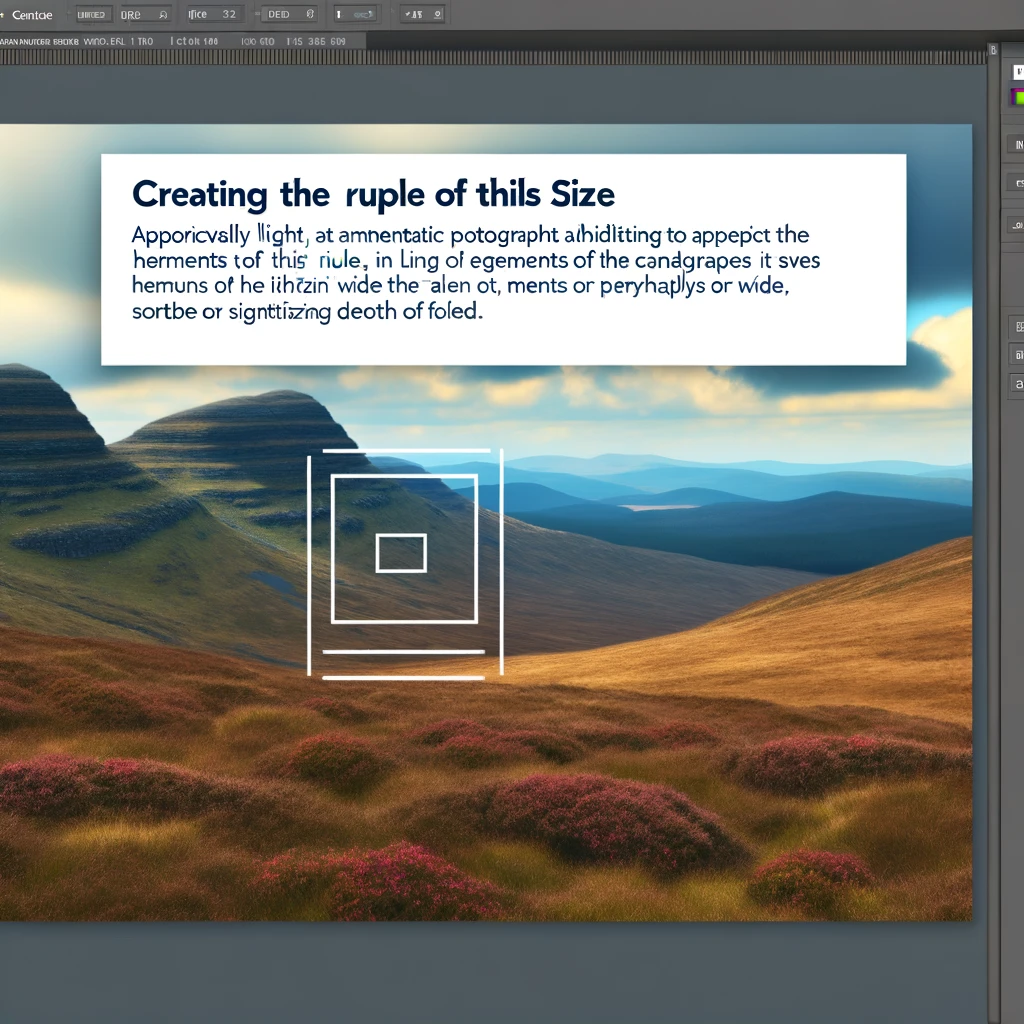
In a world where fashion is often synonymous with self-expression, the term “plus size” has evolved to represent more than just a clothing category; it embodies a movement towards inclusivity and body positivity. Plus size, generally referring to sizes 14 and up, celebrates the diversity of body shapes and sizes, challenging the narrow standards of beauty that have long dominated the fashion industry. As the demand for stylish and well-fitting plus size clothing grows, several brands have emerged as champions of this cause, offering collections that not only cater to but also celebrate fuller figures.
One such brand that has made significant strides in the plus size fashion arena is Eloquii. Known for its trend-driven designs and impeccable fit, Eloquii has become a go-to for many women seeking fashionable options that do not compromise on style. The brand’s commitment to inclusivity is evident in its wide range of sizes and its dedication to creating pieces that flatter and empower. From chic office wear to glamorous evening gowns, Eloquii ensures that every woman can find something that makes her feel confident and beautiful.
Transitioning from the contemporary to the classic, Lane Bryant has long been a staple in the plus size fashion industry. With over a century of experience, Lane Bryant has built a reputation for providing high-quality, stylish clothing that meets the needs of plus size women. The brand’s extensive collection includes everything from everyday essentials to special occasion outfits, all designed with a keen understanding of fit and comfort. Lane Bryant’s commitment to body positivity is further reflected in its inclusive marketing campaigns, which feature women of all shapes and sizes.
As we continue to explore the landscape of plus size fashion, it is impossible to overlook the impact of Torrid. This brand has carved out a niche for itself by offering edgy, youthful designs that resonate with a younger demographic. Torrid’s collections are characterized by bold prints, vibrant colors, and trendy silhouettes, making it a favorite among fashion-forward plus size women. The brand’s inclusive sizing and focus on fit ensure that every piece not only looks great but feels great too, allowing women to express their unique style with confidence.
In addition to these well-established names, newer brands like Universal Standard are also making waves in the plus size fashion world. Universal Standard’s revolutionary approach to sizing, which includes sizes 00 to 40, sets a new benchmark for inclusivity. The brand’s minimalist, modern designs are crafted with meticulous attention to detail, ensuring that every piece is both stylish and functional. Universal Standard’s commitment to diversity is further highlighted by its use of diverse models in its campaigns, challenging traditional beauty norms and promoting a more inclusive vision of fashion.
As the plus size fashion industry continues to grow and evolve, it is heartening to see more brands embracing inclusivity and celebrating the beauty of all body types. These brands are not just filling a gap in the market; they are redefining what it means to be fashionable, proving that style knows no size. By offering a wide range of options that cater to different tastes and preferences, they are empowering women to embrace their bodies and express themselves with confidence. In doing so, they are not only changing the fashion landscape but also inspiring a broader cultural shift towards acceptance and self-love.
The Evolution Of Plus Size Modeling
The world of fashion has long been a realm where beauty standards are dictated by an often narrow and exclusive lens. However, the evolution of plus size modeling has been a beacon of change, illuminating the path toward a more inclusive and diverse representation of beauty. To understand this transformation, it is essential to first grasp what is considered plus size. In the fashion industry, plus size typically refers to clothing designed for individuals who wear a size 12 or above. This classification, however, is not just about numbers; it is about embracing a fuller spectrum of body types and celebrating the uniqueness of every individual.
The journey of plus size modeling has been a remarkable one, marked by significant milestones and inspiring figures who have challenged the status quo. In the early days, the fashion industry was dominated by a singular ideal of thinness, leaving little room for diversity. Yet, as society began to question these rigid standards, a new wave of models emerged, determined to redefine beauty. These trailblazers, with their confidence and charisma, began to carve out a space for plus size models, proving that beauty is not confined to a specific size.
One of the pivotal moments in the evolution of plus size modeling was the rise of influential figures who became icons of body positivity. Models like Ashley Graham, Tess Holliday, and Paloma Elsesser have not only graced the covers of major fashion magazines but have also used their platforms to advocate for inclusivity. Their presence in the industry has been a powerful statement, challenging the conventional norms and inspiring countless individuals to embrace their bodies with pride.
As the movement gained momentum, fashion brands and designers began to take notice. The demand for plus size clothing grew, leading to the creation of more diverse and stylish options for individuals of all sizes. This shift was not just about expanding the range of sizes available; it was about recognizing the importance of representation. When people see models who look like them, it fosters a sense of belonging and validation. It sends a message that beauty is multifaceted and that everyone deserves to feel confident and celebrated.
Moreover, the evolution of plus size modeling has had a profound impact on the broader cultural landscape. It has sparked important conversations about body image, self-esteem, and the harmful effects of unrealistic beauty standards. By showcasing a variety of body types, plus size models have helped to dismantle the notion that there is only one way to be beautiful. This shift has empowered individuals to embrace their bodies, flaws and all, and to reject the pressure to conform to an unattainable ideal.
In addition to changing perceptions within the fashion industry, the rise of plus size modeling has also influenced other areas of media and entertainment. Television shows, movies, and advertisements are increasingly featuring plus size individuals, reflecting a more accurate and inclusive portrayal of society. This visibility is crucial in challenging stereotypes and promoting a culture of acceptance and diversity.
The evolution of plus size modeling is a testament to the power of resilience and the importance of representation. It is a celebration of diversity and a reminder that beauty comes in all shapes and sizes. As the industry continues to evolve, it is essential to keep pushing for greater inclusivity and to celebrate the unique beauty of every individual. By doing so, we can create a world where everyone feels seen, valued, and empowered to embrace their true selves.
Plus Size And Health: Debunking Myths
In a world where beauty standards are often dictated by the latest trends and media portrayals, the concept of “plus size” has evolved significantly over the years. Traditionally, plus size referred to clothing sizes 14 and above, but it is much more than just a number on a tag. It represents a diverse group of individuals who embody confidence, strength, and beauty in their unique forms. However, the term has also been shrouded in myths and misconceptions, particularly concerning health. It is time to debunk these myths and celebrate the truth about plus size and health.
One of the most pervasive myths is that being plus size is inherently unhealthy. This misconception stems from a narrow understanding of health, which often equates thinness with wellness. However, health is a multifaceted concept that encompasses physical, mental, and emotional well-being. It is entirely possible for someone to be plus size and healthy, just as it is possible for someone to be thin and unhealthy. Factors such as genetics, lifestyle, and mental health play crucial roles in determining an individual’s overall health.
Moreover, the notion that plus size individuals are not active or fit is another myth that needs to be dispelled. Many plus size people engage in regular physical activities, from yoga and dancing to running marathons and lifting weights. Fitness is not a one-size-fits-all concept; it is about finding what works best for one’s body and enjoying the process. The rise of body-positive fitness influencers and athletes has shown that strength, endurance, and agility come in all shapes and sizes. These inspiring individuals challenge the stereotypes and prove that fitness is inclusive.
Another myth that often goes hand-in-hand with the previous ones is the idea that plus size individuals lack self-discipline or willpower. This harmful stereotype ignores the complex relationship between body weight and various factors such as metabolism, hormonal imbalances, and psychological well-being. It is essential to recognize that everyone’s body responds differently to diet and exercise. Judging someone’s character based on their size is not only unfair but also perpetuates a culture of shame and stigma.
Furthermore, the mental health aspect of being plus size is often overlooked. The constant societal pressure to conform to unrealistic beauty standards can take a toll on one’s self-esteem and mental health. However, the body positivity movement has been instrumental in fostering a more inclusive and accepting environment. By promoting self-love and body acceptance, this movement encourages individuals to embrace their bodies as they are and focus on holistic well-being rather than just appearance.
In addition to debunking these myths, it is crucial to highlight the importance of compassionate healthcare. Plus size individuals often face bias and discrimination in medical settings, which can lead to inadequate care and misdiagnoses. Healthcare professionals must adopt a more empathetic and individualized approach, considering the unique needs and experiences of each patient. By doing so, they can provide better support and promote overall health and well-being.
Ultimately, the journey towards debunking myths about plus size and health is about shifting the narrative from judgment to understanding. It is about recognizing that health is not a monolith and that beauty comes in all shapes and sizes. By embracing diversity and promoting inclusivity, we can create a world where everyone feels valued and empowered to live their healthiest, happiest lives.
Plus Size Representation In Media
In a world where beauty standards have long been dictated by narrow definitions, the concept of plus size has emerged as a beacon of inclusivity and self-acceptance. Plus size, often defined as clothing size 14 and above, transcends mere numbers on a tag. It represents a movement towards embracing diverse body types and celebrating the uniqueness of every individual. This shift in perspective is not just a fashion statement; it is a cultural revolution that is reshaping the way we perceive beauty and self-worth.
The journey towards plus size representation in media has been a tumultuous one, marked by both progress and setbacks. For decades, mainstream media perpetuated an idealized image of thinness, marginalizing those who did not conform to these unrealistic standards. However, the tides began to turn as voices advocating for body positivity grew louder. Social media platforms became powerful tools for change, allowing plus size individuals to share their stories, challenge stereotypes, and demand visibility.
As the conversation around body diversity gained momentum, the fashion industry started to take notice. Brands that once catered exclusively to smaller sizes began to expand their offerings, recognizing the vast market potential of plus size consumers. This shift was not merely about profit; it was about acknowledging the dignity and worth of every body. Fashion shows, once dominated by a homogenous parade of slender models, began to feature plus size models who exuded confidence and grace. These trailblazers shattered the myth that beauty is confined to a specific size, inspiring countless others to embrace their bodies with pride.
The impact of plus size representation in media extends far beyond the runway. Television shows, movies, and advertisements have started to reflect a broader spectrum of body types, challenging the notion that only certain physiques are worthy of being seen. Characters who were once relegated to the sidelines are now taking center stage, their stories rich with depth and authenticity. This shift is not just about visibility; it is about validation. When people see themselves represented in media, it affirms their existence and reinforces the idea that they are deserving of love and respect.
Moreover, the rise of plus size influencers has played a pivotal role in reshaping societal attitudes. These individuals use their platforms to promote self-love, share fashion tips, and advocate for inclusivity. Their authenticity resonates with audiences, fostering a sense of community and belonging. By showcasing their lives unapologetically, they challenge the stigma associated with being plus size and empower others to do the same.
However, the journey towards true inclusivity is far from over. While progress has been made, there is still work to be done in dismantling deeply ingrained biases and ensuring that plus size representation is not a fleeting trend but a permanent fixture. It is essential for media creators, fashion designers, and society at large to continue pushing boundaries and expanding the narrative around beauty.
In conclusion, the concept of plus size is not just about clothing sizes; it is a celebration of diversity and a call for inclusivity. The representation of plus size individuals in media has the power to transform lives, fostering a culture of acceptance and self-love. As we continue to challenge outdated beauty standards and embrace the richness of human diversity, we move closer to a world where every body is seen, valued, and celebrated.
Shopping Tips For Plus Size Individuals
In a world that often celebrates a narrow definition of beauty, embracing one’s unique body shape can be a revolutionary act of self-love. For many, the term “plus size” is not just a label but a badge of honor that signifies confidence, individuality, and the celebration of curves. But what exactly is considered plus size? Generally, plus size refers to clothing that is size 14 and up, though this can vary depending on the brand and country. While the fashion industry has made strides in inclusivity, shopping for plus size clothing can still be a daunting experience. However, with the right mindset and a few savvy shopping tips, finding fabulous outfits that make you feel amazing is entirely possible.
First and foremost, it’s essential to know your measurements. Sizes can vary significantly between brands, so having your bust, waist, and hip measurements handy can save you a lot of time and frustration. When shopping online, always check the size chart and read customer reviews for insights on how the clothes fit. This can help you make more informed decisions and avoid the hassle of returns.
Another crucial tip is to focus on fit rather than size. The number on the tag is just that—a number. What truly matters is how the clothing makes you feel. Opt for pieces that accentuate your favorite features and make you feel comfortable. For instance, if you love your legs, don’t shy away from a well-fitted pair of jeans or a chic skirt. If you prefer to highlight your waist, a belted dress can work wonders. Remember, confidence is the best outfit you can wear.
When it comes to fabric, choose materials that offer a bit of stretch and breathability. Fabrics like cotton, jersey, and spandex blends can provide both comfort and a flattering fit. Avoid overly stiff materials that can feel restrictive and unflattering. Additionally, don’t be afraid to experiment with patterns and colors. While dark shades are often touted as slimming, vibrant hues and bold prints can be equally flattering and far more fun.
Layering is another fantastic strategy for plus size individuals. A well-placed jacket, cardigan, or scarf can add dimension to your outfit and provide additional coverage if desired. Moreover, layering allows you to mix and match different pieces, creating a versatile wardrobe that can adapt to various occasions.
Accessories can also play a pivotal role in elevating your look. Statement jewelry, stylish belts, and fashionable handbags can draw attention to your best features and add a touch of personality to your ensemble. Shoes, too, should not be overlooked. A great pair of shoes can not only complete your outfit but also boost your confidence.
Shopping for plus size clothing doesn’t have to be a chore. With a positive attitude and a few strategic tips, you can build a wardrobe that celebrates your unique beauty. Embrace your curves, experiment with different styles, and most importantly, wear what makes you feel fabulous. After all, fashion is not about fitting into a mold; it’s about expressing who you are. So go ahead, break the rules, and redefine what it means to be stylish. Your body is a canvas, and you are the artist.
The Future Of Plus Size Fashion
The future of plus size fashion is a vibrant tapestry woven with threads of inclusivity, innovation, and empowerment. As society continues to evolve, so too does the understanding and appreciation of diverse body types. What was once a niche market relegated to the back corners of department stores is now a burgeoning industry that celebrates curves, individuality, and self-expression. The term “plus size” itself is undergoing a transformation, shedding its outdated connotations and embracing a more inclusive and positive identity.
In the past, plus size fashion was often synonymous with limited options and uninspired designs. However, the tides are changing, and the fashion industry is beginning to recognize the beauty and potential of catering to a broader range of body types. This shift is not just about creating larger sizes; it’s about reimagining fashion to be more inclusive and representative of all people. Designers are now crafting garments that not only fit but also flatter and celebrate the unique shapes and sizes of their wearers.
One of the most exciting developments in plus size fashion is the rise of body-positive influencers and advocates who are challenging traditional beauty standards and promoting self-love. These trailblazers are using their platforms to showcase stylish and trendy outfits, proving that fashion knows no size limits. Their influence is undeniable, as they inspire countless individuals to embrace their bodies and express themselves through fashion without fear or shame.
Moreover, technology is playing a pivotal role in revolutionizing plus size fashion. Advances in fabric technology and 3D printing are enabling designers to create custom-fit clothing that enhances comfort and style. Virtual fitting rooms and augmented reality apps are making it easier for consumers to find the perfect fit without the hassle of traditional shopping. These innovations are not only making fashion more accessible but also more enjoyable for everyone.
Retailers are also stepping up to the plate, expanding their size ranges and offering more diverse collections. Brands that once ignored the plus size market are now recognizing its potential and investing in inclusive lines. This shift is not just a business strategy; it’s a reflection of a broader cultural movement towards acceptance and diversity. By offering a wider range of sizes, retailers are sending a powerful message that everyone deserves to feel confident and beautiful in their clothes.
The future of plus size fashion is also being shaped by a growing emphasis on sustainability. As consumers become more conscious of their environmental impact, there is a rising demand for eco-friendly and ethically produced clothing. Plus size fashion is no exception, with designers and brands exploring sustainable materials and practices to create stylish and responsible collections. This commitment to sustainability is not only good for the planet but also aligns with the values of many plus size consumers who prioritize ethical consumption.
In conclusion, the future of plus size fashion is bright and full of promise. It is a future where inclusivity, innovation, and empowerment are at the forefront, and where fashion is a tool for self-expression and confidence for all. As the industry continues to evolve, it is essential to celebrate and support the progress being made while advocating for even greater inclusivity and representation. The journey towards a more inclusive fashion world is ongoing, but with each step forward, we move closer to a future where everyone can feel seen, valued, and stylish, regardless of their size.
Q&A
1. **What is considered plus size in women’s clothing?**
Sizes 14 and up.
2. **What is the starting size for plus size in men’s clothing?**
XL or waist size 38 and up.
3. **Is size 12 considered plus size?**
Generally, no, but it can be in some brands.
4. **What is the average size for plus size models?**
Sizes 12 to 18.
5. **Are plus size and curvy the same?**
No, curvy refers to body shape, plus size refers to clothing size.
6. **What is the plus size range in the UK?**
Sizes 16 and up.
7. **Do plus size sizes vary by country?**
Yes, sizing standards differ internationally.
8. **Is there a specific term for plus size in fashion?**
Yes, “extended sizes” or “full-figured.”
9. **What is the plus size range in Australia?**
Sizes 16 and up.
10. **Can petite women be plus size?**
Yes, petite refers to height, plus size to clothing size.
Related Posts
What to Wear to a Tennis Match: Stunning Picks
Looking to ace your style game at the next tennis match? Discover how a chic blue hoodie can become your winning choice, blending casual comfort with a dash of courtside chic.
Stunning Black Tie Attire: Effortless Elegance Unveiled
Whether youre deciding what to wear at a concert or a high-society gala, discovering your ideal black tie outfit is all about embracing effortless elegance that echoes your unique style and sophistication. Lets dive into crafting that perfect, head-turning ensemble together.
Egypt Dress Code: Must-Have Tips for Female Tourists
Navigating the dress code in Egypt can feel like a delicate dance, but fear not, fashionable traveler! Our expert tips will help you dress respectably while still showcasing your unique style, ensuring every moment of your journey is as comfortable as it is chic.
Must-Have Outfits for a Steam Room Visit
Step into the steam room with confidence and elegance by mastering **what to wear to a steam room**. Our guide ensures you stay effortlessly stylish and supremely comfortable, no matter the humidity!
K-Pop Concert Attire: Must-Have Outfits for Trendsetters
Step into the spotlight at your next K-Pop concert with outfits that echo the electrifying energy of BTS, BLACKPINK, or EXO! Let us guide you through selecting vibrant, trend-setting pieces that not only capture the essence of K-pop culture but also showcase your individual flair and style.
Stunning Outfits for College Football Games: Score Big!
Dress to impress at your next college football game with Covetis luxurious and spirited fashion finds! Whether you’re cheering from the bleachers or a cozy college bar, discover outfits that truly resonate with your personal style and amplify your game-day experience.
Stunning Shoe Styles for Winter Graduations!
Deciding what to wear for a winter graduation can be a breeze, especially with the right shoes! Let me guide you through picking stylish yet practical footwear that will have you walking across that stage with confidence and grace.
What to Wear: Stunning Outfits for Theater Nights
Soaring above the clouds in a hot air balloon is an unparalleled adventure, and choosing what to wear is crucial for comfort and style. Lets ensure your outfit is as breathtaking as the view, blending chic with practicality for an unforgettable aerial experience.
Country Club Chic: Must-Have Outfits for Elegant Evenings
For your next pearls and prosecco bridal shower, embrace the timeless allure of country club chic with outfits that blend classic elegance with a touch of modern sophistication. Discover how to curate that perfect ensemble that will have you radiating confidence and style at any upscale event.
Stunning & Safe: Best Outfits for Food Workers
Stepping into the courtroom as a witness requires a thoughtful selection of attire that reflects professionalism and respect. Discover the key elements of dressing appropriately for court to ensure you present a dignified and sincere image that supports the gravitas of the proceedings.
Fine Dining Fashion: Must-Have Looks for Green Blazers
Stepping into a fine dining restaurant requires a touch of elegance and a dash of style; discover how a sophisticated green blazer can elevate your next gourmet outing, ensuring you look as exquisite as the dishes being served.
Stunning Jewelry Must-Haves for Bridesmaids
Deciding what jewelry to wear as a bridesmaid is more than just adornment; its about crafting moments and memories. Let me guide you through selecting stunning pieces that complement the bridal glow and celebrate your unique touch to the day’s enchantment.


















